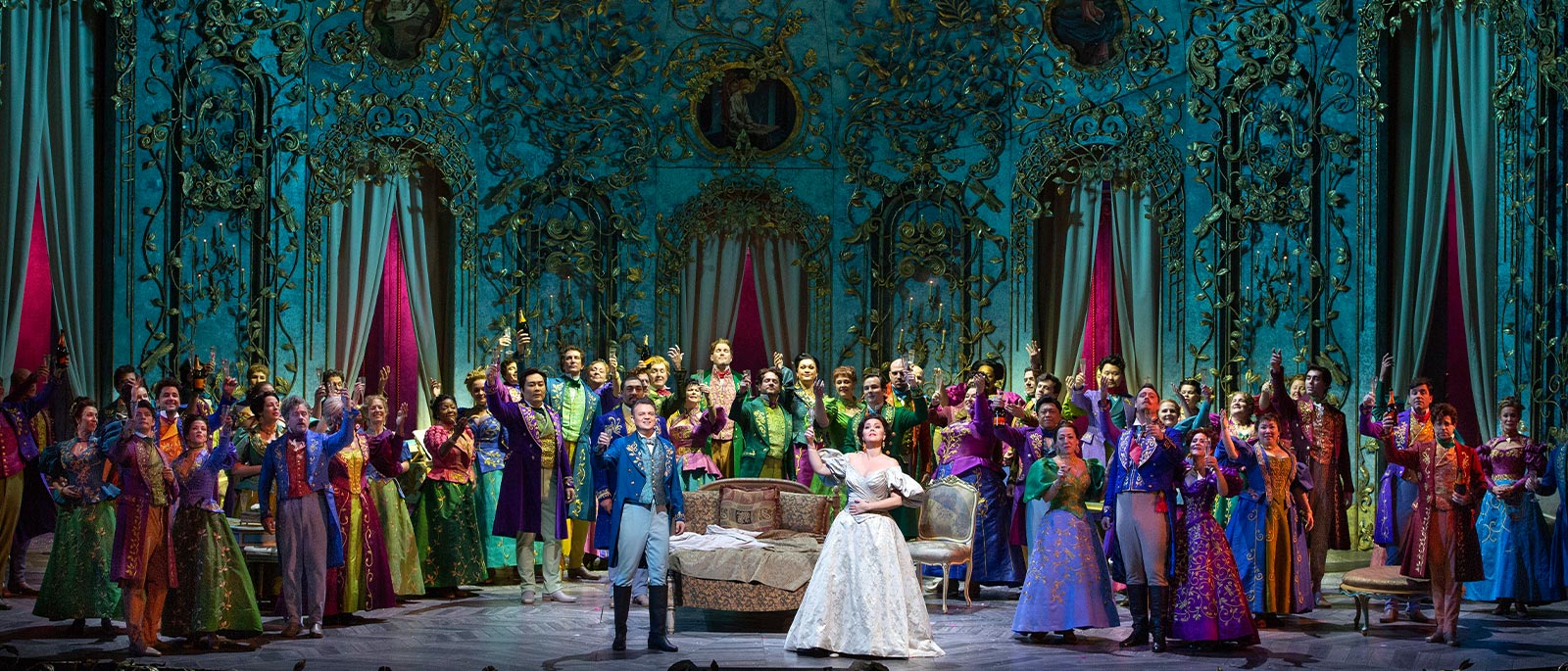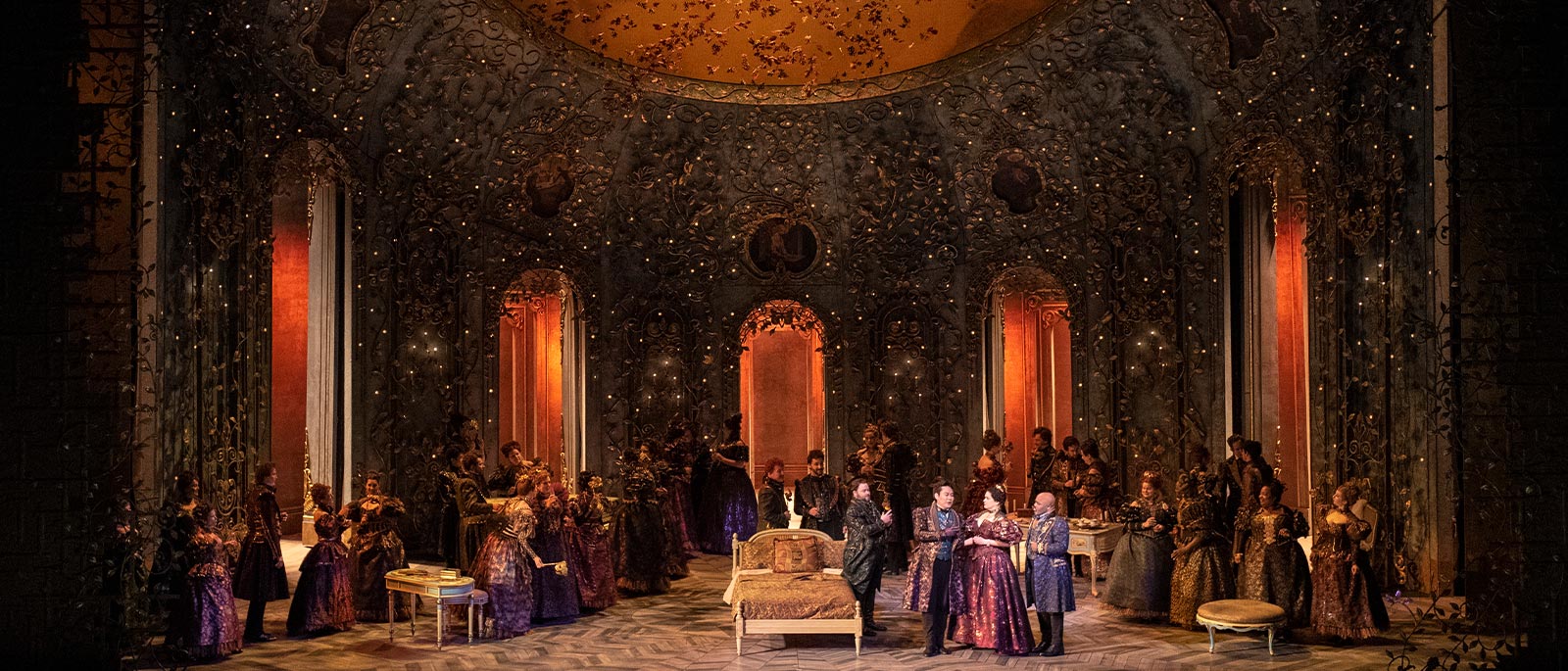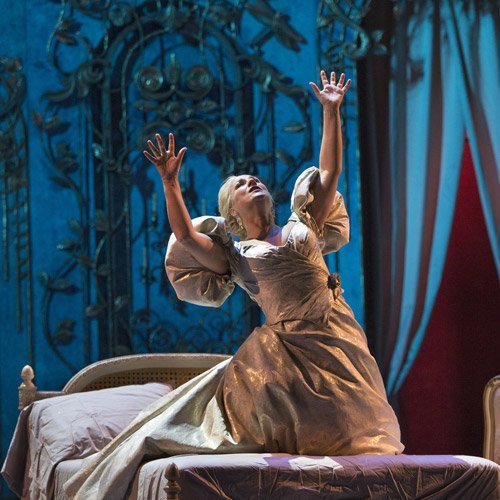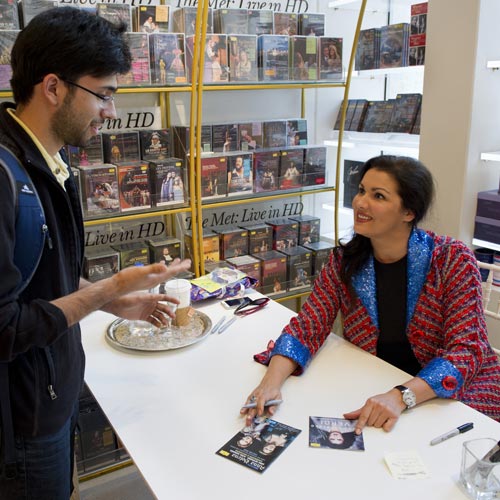This production ran: Jan 1 - Dec 31
Overview
These performances and the entirety of the 2020–21 season have been CANCELED based on the advice of health officials who advise the Met and Lincoln Center. For more information and to review your options if you purchased tickets for any of these dates, read the complete announcement.
Verdi’s poignant look at the fragility of love stars compelling sopranos Anita Hartig and Lisette Oropesa as the opera’s ill-fated heroine. Tenors Atalla Ayan, Stephen Costello, Dymtro Popov, and Migran Agadzhanyan trade off as Violetta’s idealistic young lover, Alfredo, with baritones Igor Golovatenko, Simon Keenlyside, and Amartuvshin Enkhbat as his unbending father, Germont. Speranza Scappucci and Daniele Callegari conduct the heartbreaking score.
Revival a gift of NPD Group, Inc.
Languages
Titles
Timeline
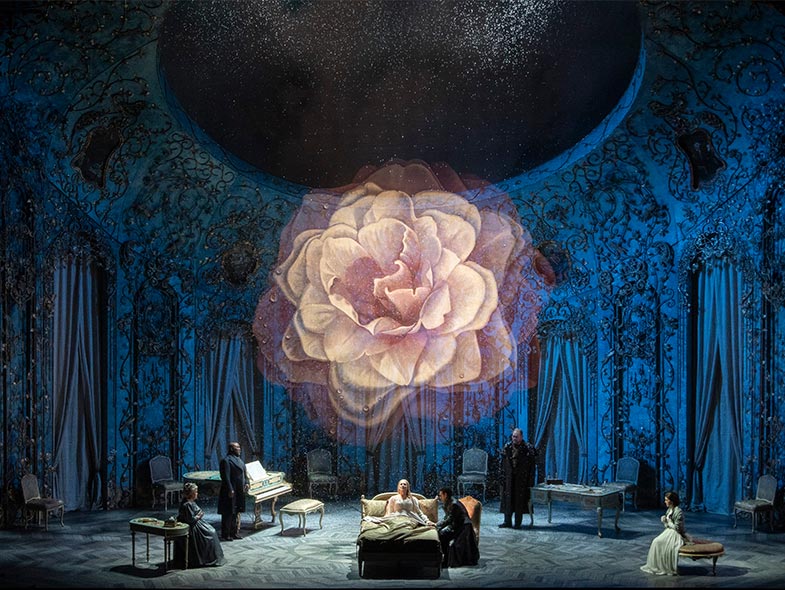
World premiere: Venice, Teatro la Fenice, 1853. Verdi’s La Traviata survived a notoriously unsuccessful opening night to become one of the best-loved operas in the repertoire. Following the larger-scale dramas of Rigoletto and Il Trovatore, its intimate scope and subject matter inspired the composer to create some of his most profound and heartfelt music. The title role of the “fallen woman” has captured the imaginations of audiences and performers alike with its inexhaustible vocal and dramatic possibilities—and challenges. Violetta is considered a pinnacle of the soprano repertoire.
Creators
In a remarkable career spanning six decades in the theater, Giuseppe Verdi (1813–1901) composed 28 operas, at least half of which are at the core of today’s repertoire. Francesco Maria Piave (1810–1876) was Verdi’s librettist during his productive middle period and also worked with him on Ernani, Macbeth, Rigoletto, and La Forza del Destino, among others. Alexandre Dumas fils (1824–1895) was the son of the author of The Three Musketeers. The play La Dame aux Camélias is based on his own semi-autobiographical novel of the same name.
PRODUCTION
Michael Mayer
SET DESIGNER
Christine Jones
COSTUME DESIGNER
Susan Hilferty
LIGHTING DESIGNER
Kevin Adams
CHOREOGRAPHER
Lorin Latarro
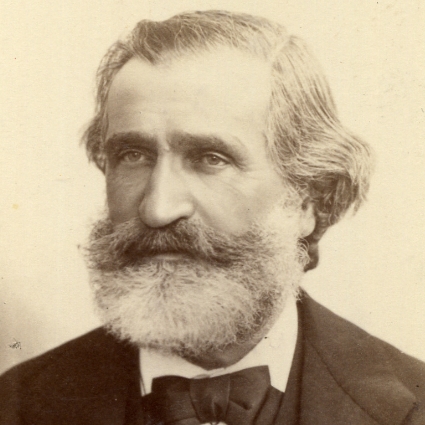
Composer
Giuseppe Verdi
Setting
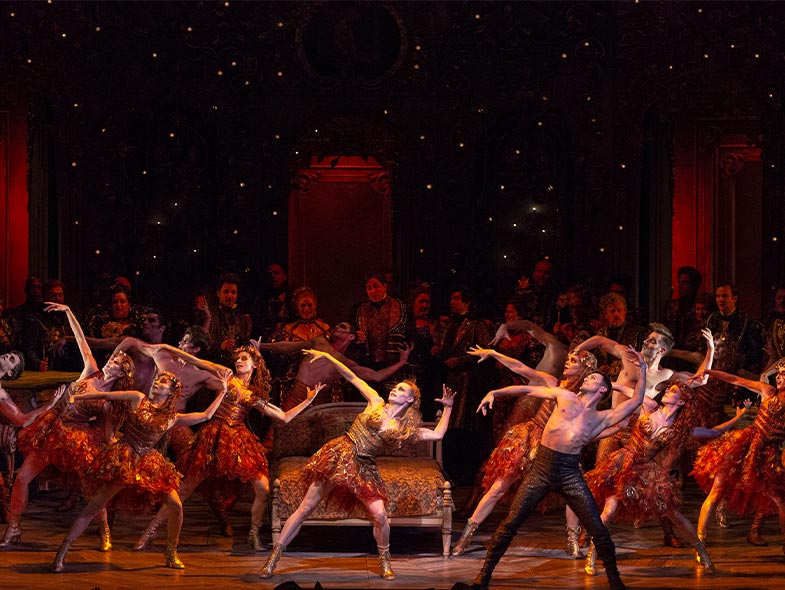
With La Traviata, Verdi and Piave fashioned an opera from a play set in contemporary times—an exception in the composer’s long career. Dumas’s La Dame aux Camélias was a meditation on the author’s youthful affair with the celebrated prostitute Marie Duplessis, known as a sophisticated and well-read woman whose charms and tact far surpassed her station. The play is still staged today in its original form and exists in several film incarnations, most notably Greta Garbo’s Camille (1936).
Music
Verdi’s musical-dramatic ability to portray the individual in a marginalized relationship to society keeps this work a mainstay on the world’s stages. The vocal and emotional scope of the title character is enormous—from her Act I show-stopper aria “Sempre libera degg’io” to the haunting regret of “Addio, del passato” in Act III to the extended Act II confrontation with her lover’s father, Germont.
